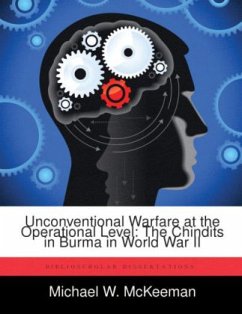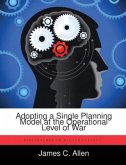The challenge modern strategists face concerns preparing for two disparate types of war. One war is conventional and employs forces in familiar ways. The other, more likely war is unconventional in that forces will fight behind enemy lines, relying on tenuous lines of communications. In both cases, the strategist must define the desired outcome, the resources available to achieve that outcome, and the ways to employ those resources. Whether conventional or unconventional, modern warfare requires operational design to bland the ways and means to achieve the end. This monograph draws together operational art and unconventional warfare. At the outset, this monograph reviews operational art and operational planning using the familiar framework of METT-T (mission, enemy, troops available, terrain, and time). With that construct, this paper analyzes these interdependent elements of operational planning and how they differ from the tactical level. Recognizing that these elements are notall-inclusive, this paper turns to common underlying operational factors - intelligence, sustainment, and leadership - which play crucial roles at the operational level. Next, this monograph turns to the Chindits operation in Burma in 1944. After reviewing the strategic setting, this analysis examines the Chindits operation using the same analytical framework. The result is a useful comparison of the Chindits operation and operational art. The study of the Chindits operation yields several significant conclusions for future consideration. First, training proves itself as a combat multiplier for both the tactical unit and the operational level staff. Second, military operations will always be driven and resourced by political decisions. Finally, as a way to employ means to achieve a strategic end, unconventional warfare blends well into operational art.
Hinweis: Dieser Artikel kann nur an eine deutsche Lieferadresse ausgeliefert werden.
Hinweis: Dieser Artikel kann nur an eine deutsche Lieferadresse ausgeliefert werden.








